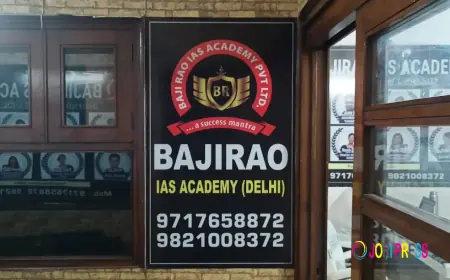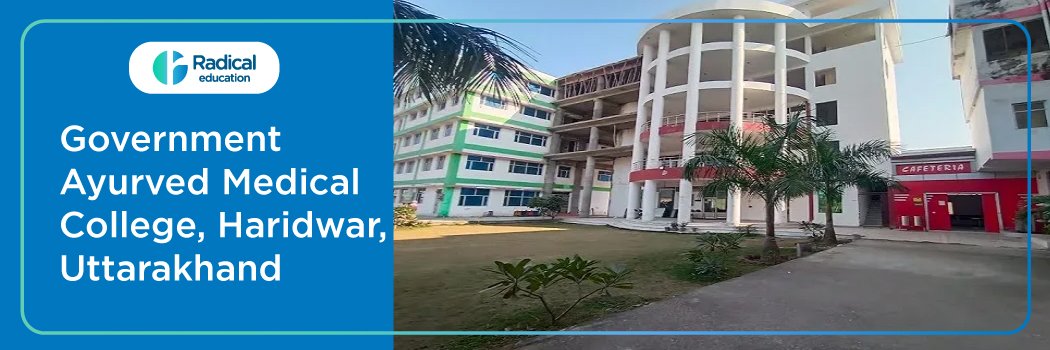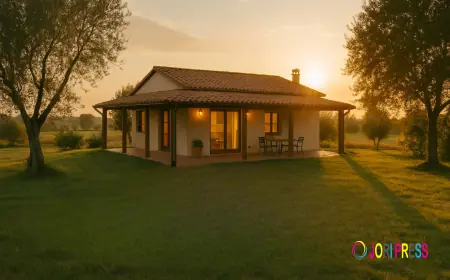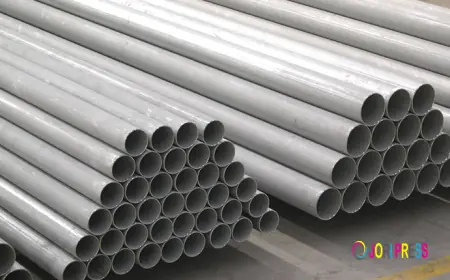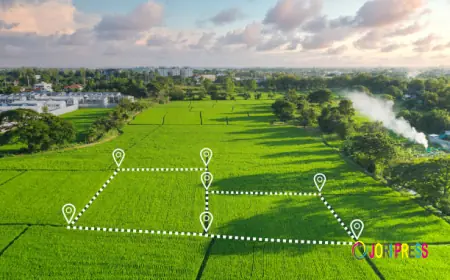uPVC vs Metal Rainwater Gutter Pipes: Which Is Better?
A properly functioning gutter system is one of the most underrated protections a home can have. It may not be as visible as your roof, windows or exterior paint, but it plays a crucial role in keeping your foundation, walls, landscape and roof safe from water damage. Yet when homeowners plan construction or renovation, gutters often become an afterthought. Many choose whatever material the contractor suggests without understanding the long-term impact.
Today, there are two main categories most homeowners consider: uPVC gutters and metal gutters. Each has its own strengths, weaknesses, costs and maintenance requirements. Choosing between them is not as simple as comparing price tags. Climate, rainfall intensity, coastal salt exposure, architectural design, lifespan expectations and budget — all of these influence the decision.
Before investing in a gutter system that may last decades, it's important to know what you’re getting. The right choice will help prevent roof leaks, mold growth, soil erosion, damp walls, foundation cracks and costly repairs. The wrong one can become a constant maintenance headache.
This blog breaks down everything you need to know before deciding which type of Rainwater gutter pipe is best for your home. From durability and rust resistance to insulation, installation, cost, aesthetics and environmental factors, we’ll compare both options in depth so you can make an informed decision.
Understanding uPVC Gutters
uPVC stands for unplasticized polyvinyl chloride. It is essentially PVC without plasticizers, which makes it stronger, more rigid and more durable. uPVC has been widely used in plumbing, window frames, exterior cladding and roofing for decades due to its ability to withstand harsh weather.
In the context of gutters, uPVC systems are designed to be lightweight, corrosion-free, watertight and easy to install. They usually come in pre-engineered modular designs with snap-fit joints, allowing faster installation with fewer tools. Manufacturers also offer uPVC gutters in several colors, commonly matching roof tiles or exterior walls.
Because uPVC is chemically inert, it does not react with air, heat, moisture or salt in the environment. That makes it particularly suitable for tropical regions, high-rainfall areas, coastal regions, and cities with industrial pollution.
Understanding Metal Gutters
Metal gutters have been around much longer than uPVC. Traditionally, homes used galvanized steel or cast iron because they were considered strong, readily available and inexpensive. Over the years, aluminum, stainless steel and copper also became popular alternatives.
Each metal behaves differently. Galvanized steel is cheaper but can rust. Aluminum doesn’t rust easily but can dent and warp in heavy storms. Copper is extremely durable and visually appealing, but expensive. Stainless steel resists corrosion well, yet costs more than regular steel.
Metal gutters are still common because many homeowners prefer their rigidity, structural strength, and traditional appearance. However, depending on the climate, regular painting, sealing, rust treatment or cleaning may be necessary to maintain performance.
Durability and Weather Resistance
One of the most important factors when choosing gutter material is how well it withstands changing weather conditions. Heavy rainfall, extreme heat, UV exposure, salt-laden winds and seasonal storms can significantly affect gutter lifespan.
uPVC gutters are naturally resistant to corrosion, humidity and chemical reactions. Even in coastal regions, they do not rust or degrade. They also handle heat well, maintaining structural integrity without warping if high-quality UV-resistant material is used. Their expected lifespan is often 25 to 50 years with minimal maintenance.
Metal gutters vary widely. Aluminum and stainless steel may last decades, but cheaper metal gutters can rust, crack or develop holes over time. Constant exposure to moisture speeds up deterioration. In extremely hot climates, metal expands and contracts repeatedly, sometimes loosening joints or fasteners.
If you live in an area with high rainfall or near the sea, uPVC generally performs better in the long run. For dry climates, metal can still be a strong contender — especially if rust-resistant.
Installation Requirements and Ease
Installation affects both initial cost and long-term performance. A poorly fitted gutter system can overflow, leak, sag or detach regardless of material quality.
uPVC gutters are easier and faster to install because they are lighter and often come with interlocking designs. Many systems do not require welding, soldering or specialized tools. This reduces labor time and installation charges. Their lightweight nature also reduces strain on roof edges and fascia boards.
Metal gutters can require more expertise. Aluminum is relatively easy to cut and shape, but steel and copper may need welding or soldering to secure seams. The installation process is more labor-intensive, and precise sealing is necessary to prevent leaks or corrosion.
If your priority is quick installation with long-term sealing reliability, uPVC often offers an advantage.
Maintenance and Longevity
Maintenance is a major deciding factor for homeowners. Even the best gutters collect leaves, dirt and debris, which need occasional cleaning. But beyond cleaning, material behavior determines future repair expenses.
uPVC gutters need very little maintenance. They do not need painting, polishing or rust treatment. Occasional washing to remove dirt buildup is usually enough. Since joints are typically sealed with rubber gaskets or engineered connectors, leaks are less common.
Metal gutters require more attention. Galvanized steel may need rust-resistant coating. Aluminum may need repainting or dent repair. Copper must be cleaned to maintain shine if aesthetics matter. In areas with acidic rain, metal deterioration may happen faster. Holes, corrosion or rusted fasteners can compromise performance.
If you want a long-lasting gutter system that requires minimal maintenance time and cost, uPVC is generally the more practical choice.
Strength, Load Handling and Structural Support
Strength matters in regions with heavy rainfall, snowfall or storm winds. Gutters must withstand constant flowing water, debris weight and external pressure.
Metal gutters are stronger in terms of rigidity and resistance to impact. If you live in a region with hailstorms or frequently falling branches, metal may last longer physically. Some homeowners prefer metal for industrial or commercial buildings because of its structural toughness.
uPVC gutters are strong but not as impact-resistant as metal. With modern formulations, they can handle heavy rain and normal debris weight, but sudden external force may crack or dislodge them. Still, for most residential properties, uPVC strength is more than sufficient.
The right choice depends on local environmental stress, not just material preference.
Aesthetic Appeal and Home Design
Gutters contribute to the visual character of a house, especially when placed along rooflines or visible facades. Homeowners should consider how well the material matches the architecture.
uPVC gutters come in multiple colors and finishes that blend with modern homes. Their clean, minimal appearance suits contemporary designs. The color is often embedded into the material, so it doesn’t peel or fade easily.
Metal gutters have a classic, elegant look. Copper develops a natural green patina over time, which many homeowners love for its antique charm. Aluminum and steel may complement traditional or heritage homes better.
Your home style, roofing material and exterior paint can help determine which option looks best.
Environmental and Sustainability Considerations
Sustainability has become an essential factor in construction decisions. Both uPVC and metal have environmental advantages and drawbacks.
uPVC gutters are recyclable and energy-efficient to manufacture, but only if recycled responsibly. Their long lifespan also reduces material replacement waste.
Metal gutters, especially aluminum and copper, are highly recyclable and often contain recycled content already. However, mining and refining metals require significant energy and environmental extraction impact.
If sustainability is a priority, check whether the manufacturer has recycling programs or uses eco-friendly production methods.
Cost Comparison
The final choice often depends on budget. Costs include purchasing, installation, maintenance and replacement over time.
uPVC gutters usually cost less upfront and install cheaper because of lighter weight and easier assembly. Over decades, low maintenance makes them even more cost-effective.
Metal gutters vary widely. Aluminum is moderately priced, steel ranges higher, and copper is significantly more expensive. Installation and future maintenance add to the overall cost.
If your goal is long-term affordability, uPVC is typically the winner. If you want premium aesthetics and don’t mind a higher budget, metal may be worth the investment.
Which One Should You Choose?
There is no universally perfect choice. The right material depends on your home’s needs, climate, budget and personal preference.
Choose uPVC if:
You live in a coastal, humid or high-rainfall area
You want low-maintenance, corrosion-free gutters
You prefer quicker installation and lower costs
You want modern colors that blend with home design
Choose metal if:
You prefer a traditional or premium architectural look
You live in a region with hail or falling branch risks
You don’t mind occasional maintenance or repairs
You are willing to invest more upfront
Both can perform well if selected and installed correctly.
Final Thoughts
Your gutter system might not be the first thing you notice about your home, but it silently works every day to protect your structure from water damage. Whether you choose uPVC or metal, prioritize durability, installation quality, warranty, local climate suitability and reputation of the manufacturer. A good gutter system doesn’t just manage rainwater — it preserves your home’s strength for decades.
Before finalizing, speak with a trusted contractor, compare long-term maintenance costs and evaluate how the material fits your lifestyle. The goal isn’t just to install gutters quickly but to ensure reliable performance for years.
A well-chosen Rain water gutter system is not merely a construction element — it's an investment in your home’s future stability and safety.
What's Your Reaction?
 Like
0
Like
0
 Dislike
0
Dislike
0
 Love
0
Love
0
 Funny
0
Funny
0
 Angry
0
Angry
0
 Sad
0
Sad
0
 Wow
0
Wow
0
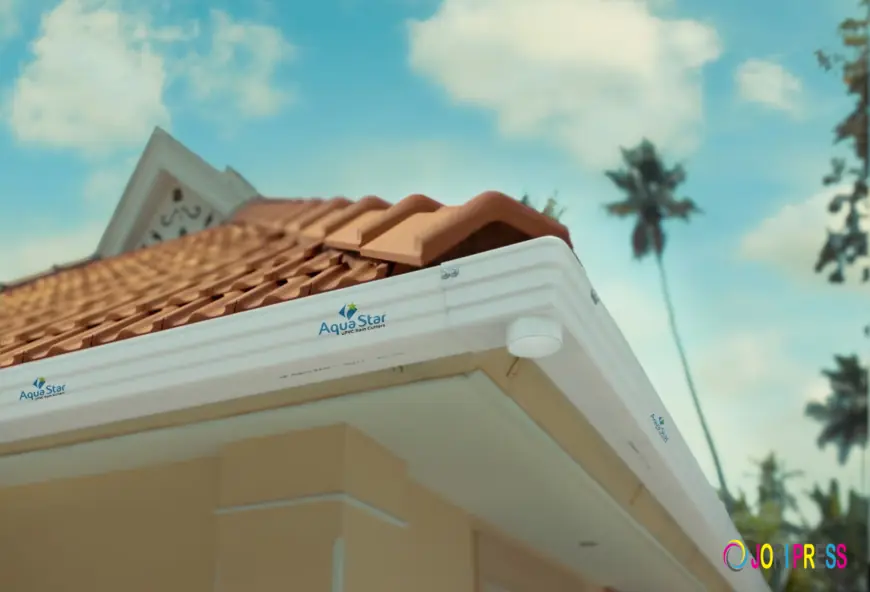
 Like
0
Like
0
 Dislike
0
Dislike
0
 Love
0
Love
0
 Funny
0
Funny
0
 Angry
0
Angry
0
 Sad
0
Sad
0
 Wow
0
Wow
0
